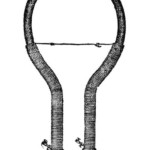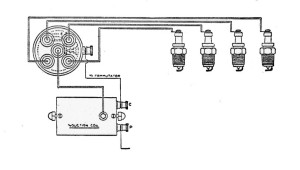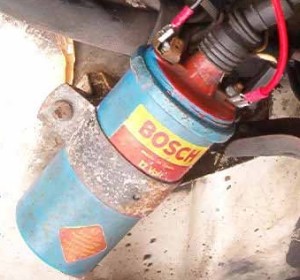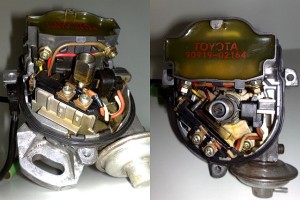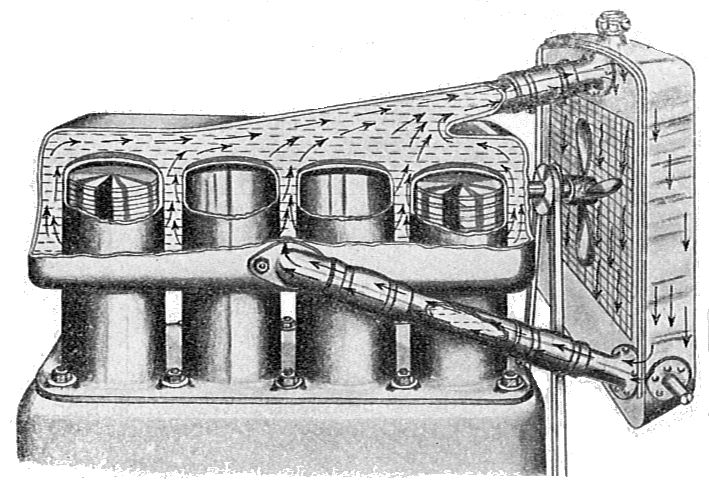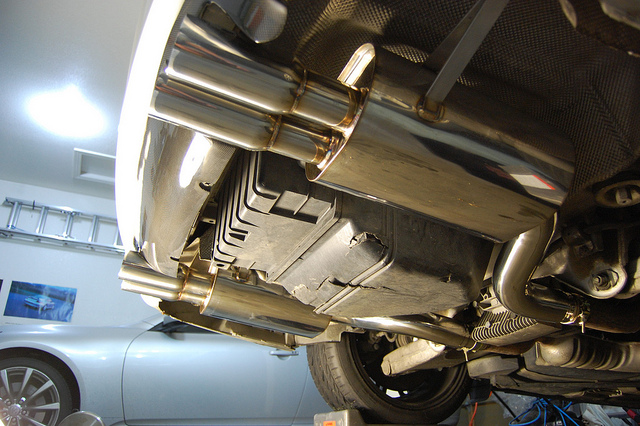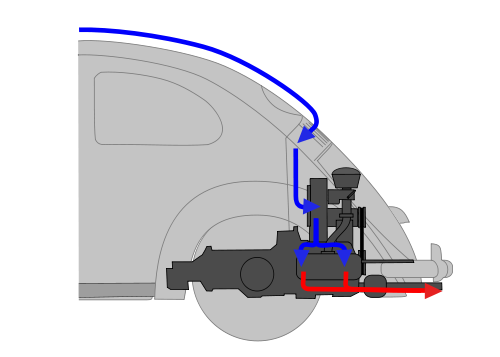What is an Ignition Coil?
An ignition coil is a device that transforms the relatively low voltage from a car’s battery into the high voltage that’s required to jump the gap of a spark plug. These devices are actually induction coils that consist of a primary and secondary winding and a single iron core. When an electrical current is passed through primary winding, that creates an magnetic field, which is collapsed in order to induce a high voltage pulse in the secondary winding. Ignition coils form the basis of all battery-and-coil ignition systems, from the original points and condensor systems to modern distributorless ignitions.
Contents
History of the Ignition Coil
Ignition coils are essentially just specialized induction coils, which were the very earliest type of electrical transformers. These devices were developed during the middle part of the 18th century, mostly through a process of trial and error, during which researchers experimented with different types of windings and cores.
The principle of induction, which is how ignition coils operate, was discovered in 1831 by English scientist Michael Faraday. Then, in 1836, Irish scientist Nicholas Callan invented the first induction coil, which worked according to Faraday’s induction law. Other scientists, engineers, and inventors continued to work with induction coils, which ultimately led to the development of much more sophisticated transformers. However, simple induction coils would ultimately see their greatest use in automotive applications.
By the turn of the 20th century, internal combustion engines were using magnetos to generate the necessary voltage to activate their spark plugs. Then, in 1910, the very first battery-powered induction coil was used instead. This landmark ignition system was first available in the 1910 Cadillac, and it eventually displaced the magneto altogether.
Ignition Coil Components and Construction
Every ignition coil consists of three basic components:
- a primary winding
- a secondary winding
- an iron core
In addition to these basic components, ignition coils also have positive and negative electrical connections, and a coil wire connector, all of which are contained within some type of housing. Some ignition coils also have an internal resistor to limit current flow, although an external resistor or resistor wire is sometimes used instead.
Although these basic components have remained relatively unchanged throughout the years, ignition coil construction techniques and materials have changed somewhat. Early ignition coils used varnish and paper to insulate the windings, and the steel housings were often filled with asphalt or oil to provide both additional insulation and some level of moisture protection.
The windings, cores, and other components of modern coils are typically cast in epoxy resin. This process insulates the windings and prevents any moisture from penetrating into the body of the coil. In modern distributorless ignition systems, there is typically one coil per cylinder, or one per two cylinders, in which case each coil typically also contains a diode or some type of secondary spark gap.
How Does an Ignition Coil Work?
The basic principles that ignition coils use have remained unchanged since pioneers like Faraday and Callan did their initial experiments in the 18th century. The basic steps of the process are:
- An electric current passes through the primary winding.
- The current flowing through the primary winding creates a magnetic field.
- Once enough energy is stored in the field, a contact breaker collapses the field.
- The collapsing magnetic field induces an electric current in the secondary winding.
- Since the secondary winding consists of many thousands of turns of fine wire, a high voltage pulse is generated.
- The high voltage pulse from the secondary winding is applied to a spark plug.
Although that description paints a relatively accurate picture, the actual process is somewhat more complicated. In older engines, points and a condensor are used. The points are a type of mechanical contact breaker that are driven by the distributor shaft, which itself is driven by the crankshaft. Since the crankshaft itself is driven by the movement of the pistons, this allows the points to open and closes in time with the movement of the pistons, which is how the ignition coil is made to generate its high voltage pulses at the proper time.
In both electronic ignition systems and modern distributorless ignition systems, this same basic process occurs without a condensor or mechanical points. Instead of using mechanical systems, sensors provide relevant information about the engine timing to the engine control module or directly to an ignition module. A solid state switching device (like an ignition module) is then used to generate the high voltage pulses at the proper time.
Ignition Coil Failure
When an ignition coil fails, the engine will either run poorly or fail to run at all. Engines that use a single ignition coil will fail to run at all, while engines that have multiple coils will run poorly. However, a lack of spark doesn’t necessarily indicate a failed ignition coil.
Since coils rely on other components for their proper operation, there are a lot of reasons that a coil might fail to provide spark. In older engines, the culprit might be burnt points or a bad consensor, and the ignition module is a common point of failure in modern engines. A malfunctioning cam or crank sensor, hall effect switch, or other component can also result in a lack of spark, or improperly timed spark.
If all of the external components check out okay, it’s always possible that a coil may have an internal fault. However, every coil has a somewhat different diagnostic procedure associated with it. Depending on the vehicle you’re working with, you may be able to check resistances at the primary and secondary windings to determine if there is an internal fault. In some cases, it’s also important to check if the coil is getting power. In any case, it’s important to look up the specific diagnostic procedure before you get started.

